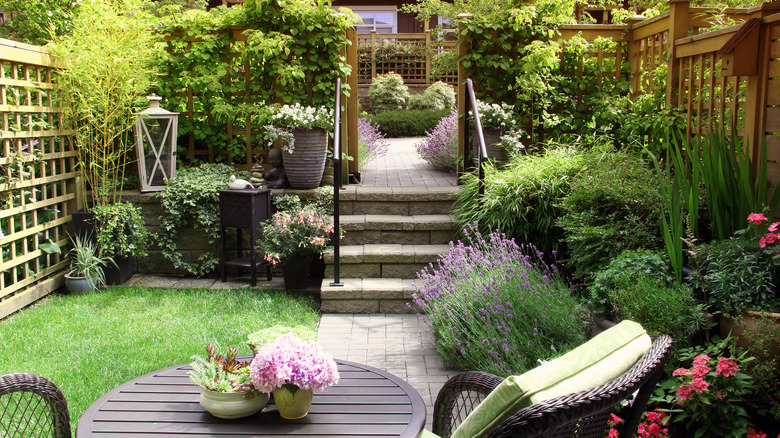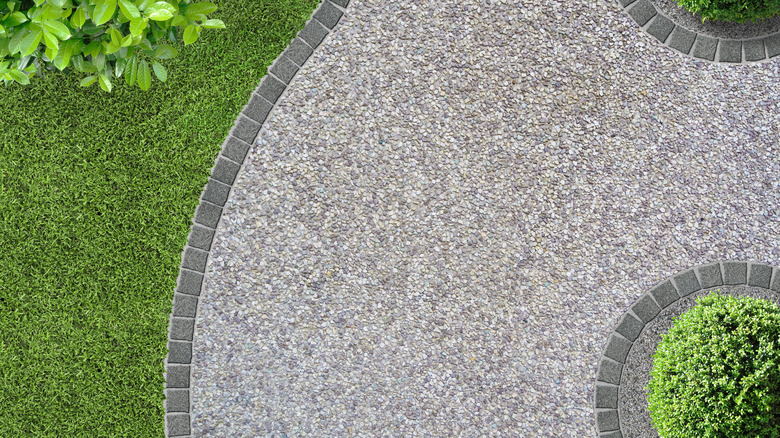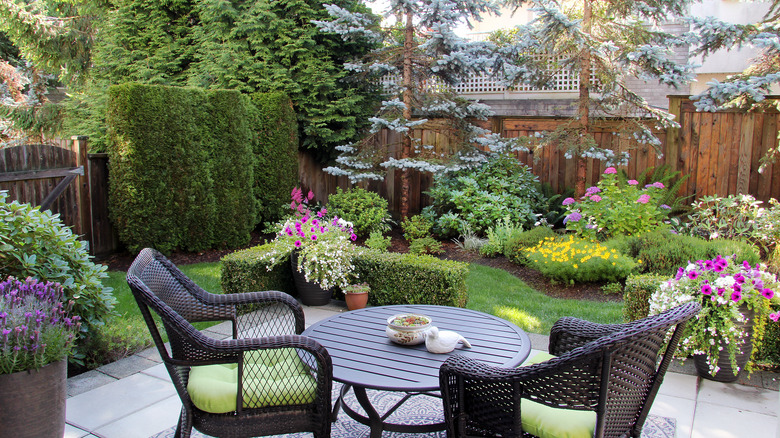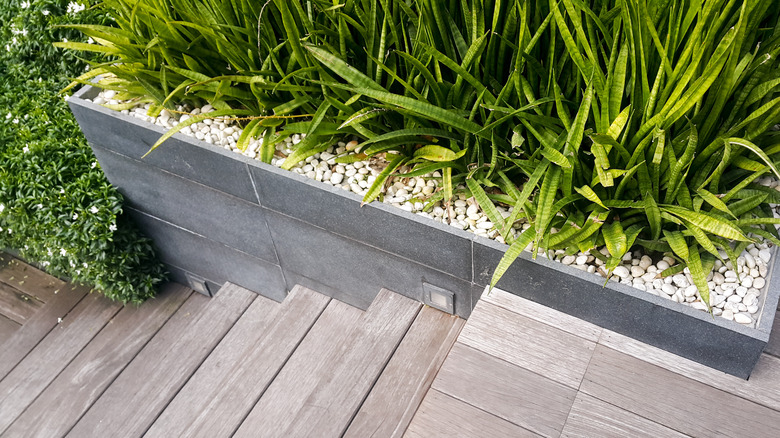The Best Way To Make The Most Out Of A Small Backyard
Small backyards offer endless opportunities to adapt the space to your needs. Often requiring less upkeep than larger yards, small backyards make for intimate and intentional outdoor spaces. These functional and stylish spaces become an important and often used additional room for many homes, allowing, in fair weather, the chance to relax, dine, and play under the sun and stars.
While small backyards are no different than their larger counterparts in most ways, with less room to spread out or make design mistakes, they can be a challenge when creating a layout that maximizes available space and avoids looking cramped or boxy.
The key, according to Burke's Backyard, is often fooling the eye. You can use any number of simple visual tricks to make your space seem more cohesive and expansive. By considering a few key principles related to visual lines, illusion, and perspective, you can make any space — even a small backyard — feel layered, complex, and larger than life.
Emphasize curves
Curved lines and rounded surfaces often give the illusion of endlessness. Baroque architecture, which employed glorious and luxurious curves in the 17th and 18th centuries, was known for its spaces seeming vast and endless. You can apply similar principles to your outdoor spaces. Curved (round, oval, or spherical) lines and objects often do not have the sense of finiteness that is characteristic of right-angled elements.
Many smaller yards can seem quite boxy and impersonal. But by adding a curved path flanked by rounded flower and plant beds, you can give your outdoor space the illusion of being much less limited in acreage. A gently curving path or a serpentine walkway is a great idea even in the narrowest yards.
According to Kevin Lee Jacobs, a serpentine path is also a great idea for hilly or sloped yards. The eyes and feet are allowed to wander to all parts of the property, which immediately gives a sense of largeness. Consider round lines when it comes to pathways, decking, and patios, as well as furnishings like tables, firepits, chair configurations, and water features. Plant beds can be round, oval, or half-moon shaped to maximize the sense of roundness in any garden space.
Think vertical
Like any interior room in your home, the sense of size and depth is maximized by height. Elements in your yard that direct the eye vertically can do wonders to make a small backyard feel larger. Tall, slender bushes and trees work to immediately give a sense of height and serve as necessary shade. Trees that are bare or thinner near the bottom and fuller near the top work wonders. Pretty Purple Door recommends slender trees like Goldspire ginkgo and weeping white spruce as great options. Also, the vertical boards of a fence immediately make both the fence and what it contains seem higher and larger than a low, horizontal one.
Consider placing a pergola or other types of vertical structures over parts of your garden. While you might assume this will make the garden seem smaller, when placed correctly, these great structures have the effect of both drawing the eye toward them and making your backyard or garden seem like an extension of the inside of your home. Trellises and walls of climbing plants also bring the eye up from the ground. Other ways to achieve increased verticality in any space are to choose outdoor furniture fabrics, umbrellas, and accessories with vertical stripes.
Layered spaces
Somewhat related to vertical lines is layering your space. No matter the size, incorporating different levels and layers into any space makes it seem larger. Instead of garden beds directly on the ground, consider raised beds that add another horizontal plane to your yard. Decks and raised patios do a lot to add layers to your backyard experience, so consider incorporating even a small raised area in your yard, either made from stone or wood. Small backyards can benefit from various visual levels that function as different rooms or zones in the space; e.g., a raised deck for dining, stairs, a water feature, a fire firepit area, or a benched seating area.
Incorporating levels can also work well for sloped or hilly backyards. Various planes give your yard a larger feel. If you're building a paving stone patio, consider raising it two to three inches above the ground. Instead of the traditional approach of placing a patio right off your home, you can instead raise the farthest area of the yard, which will add a focal point and a feeling of spaciousness. These decks, which Decks & Docks describes as "floating decks," are a great option for creating multiple levels in even the smallest yards.



